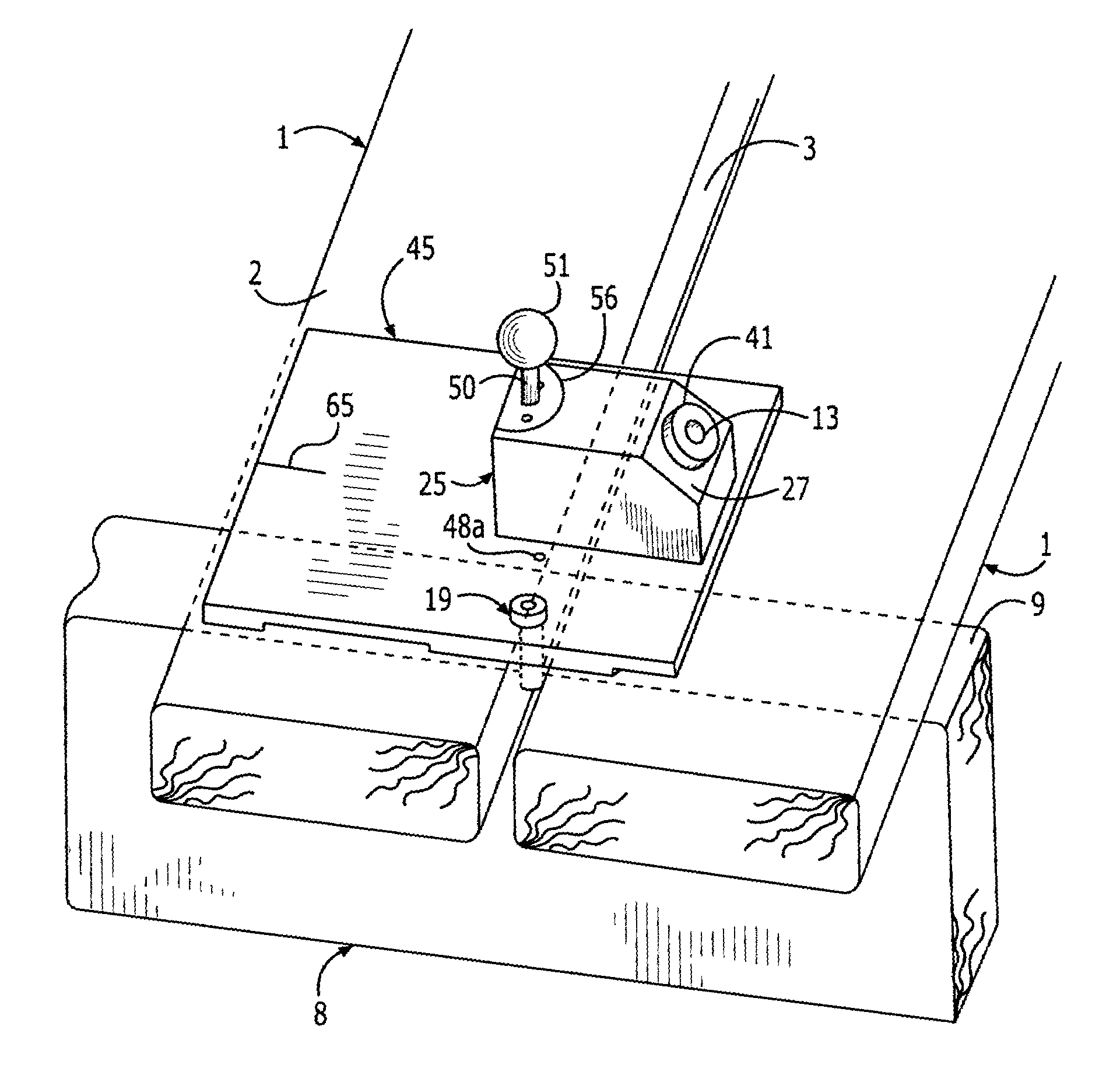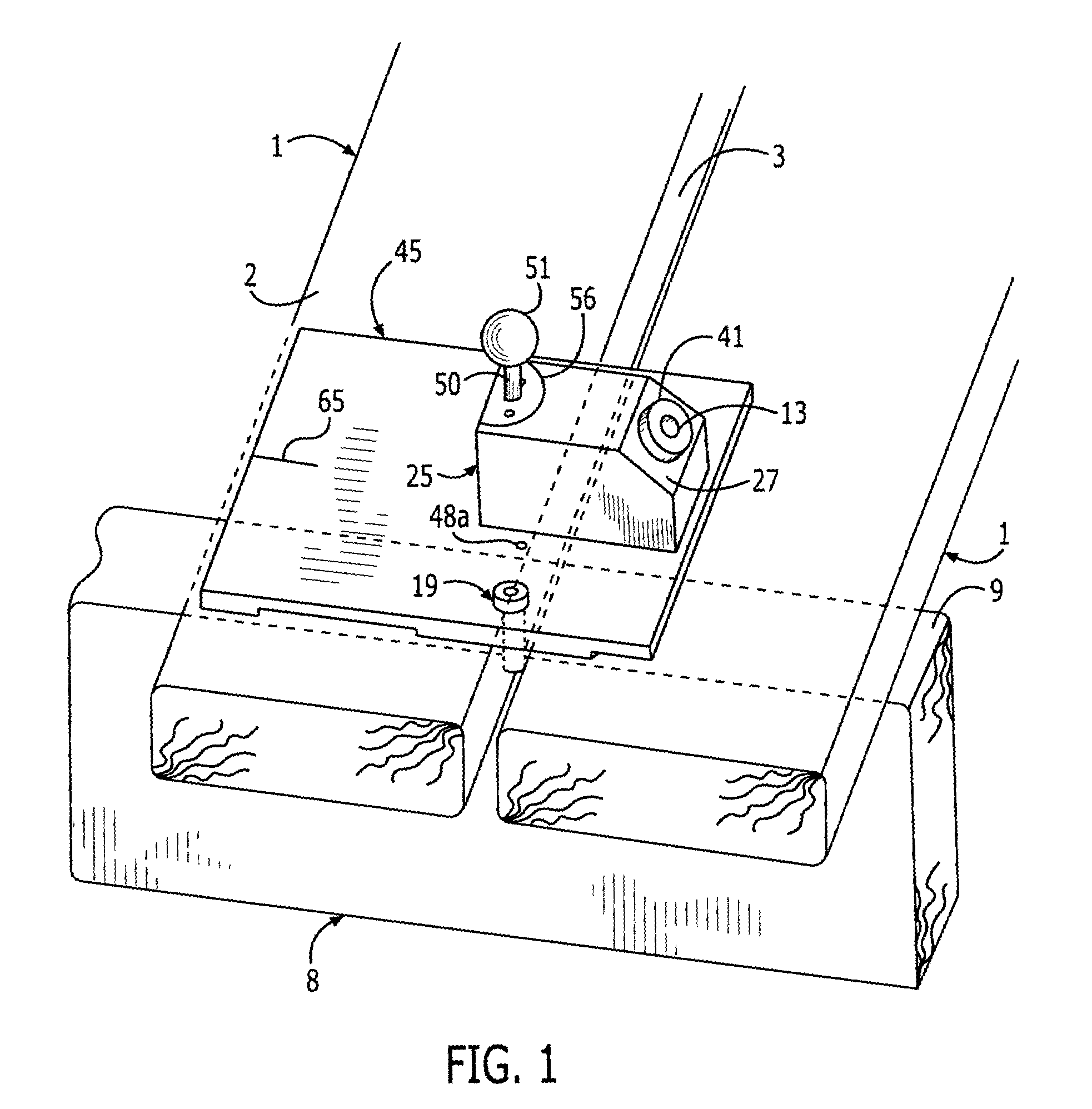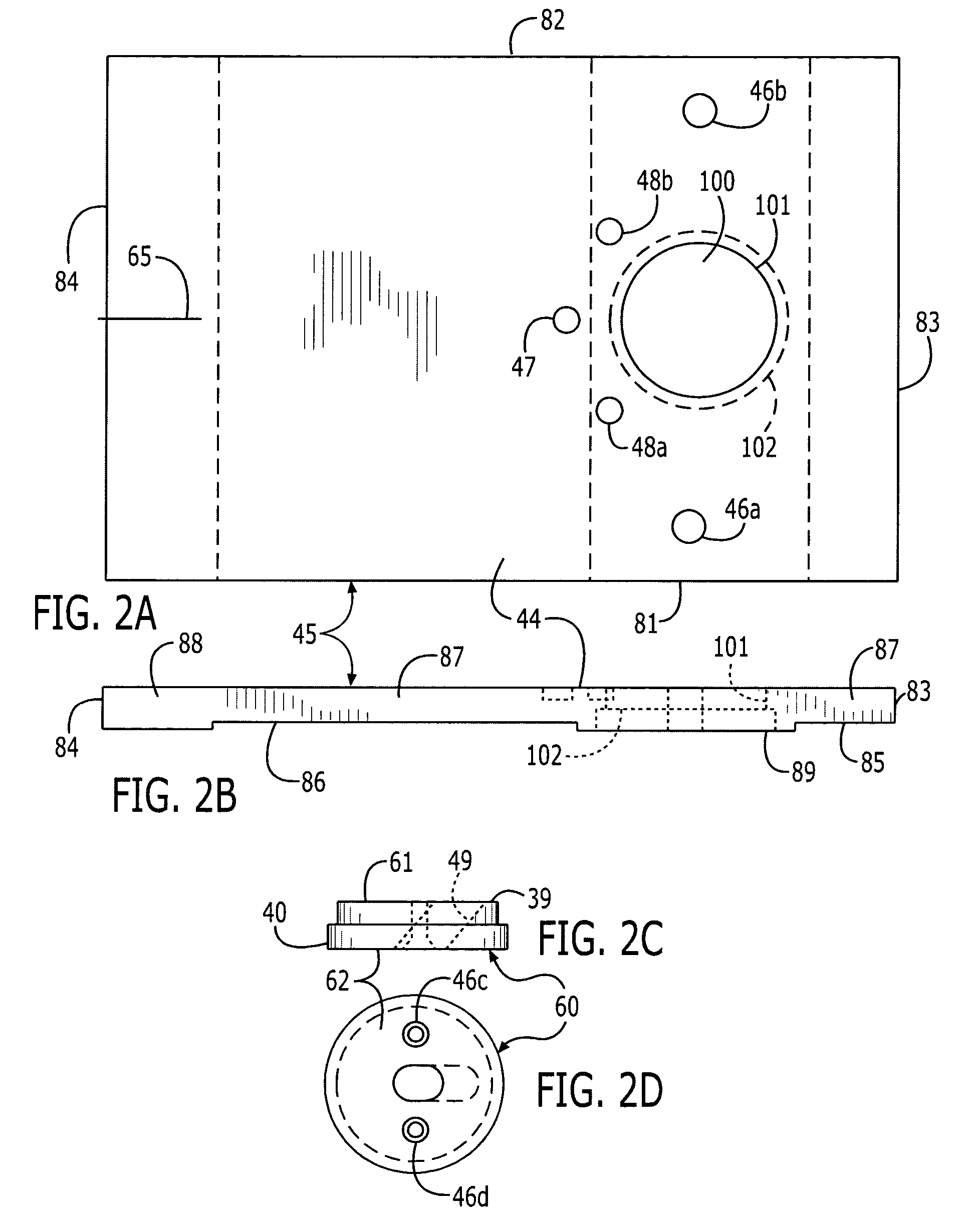Concealed fastener, system, and associated methods
a technology of fasteners and concealed parts, applied in the direction of wrenches, screwdrivers, constructions, etc., can solve the problems of unsightly fastener heads, future problems, crack propagation, fungal and mold growth, etc., and achieve the effect of adequate spacing
- Summary
- Abstract
- Description
- Claims
- Application Information
AI Technical Summary
Benefits of technology
Problems solved by technology
Method used
Image
Examples
first embodiment
[0050]a method of use is intended for decking member materials that require predrilling of a pilot hole 71. Predrilling minimizes the chance of splitting the decking member 1, or breaking or stripping the head 74 of the fastener 70, especially when using hardwoods. Pressure is applied to the top surface 44 of the base plate 45, such as by the user's knee or foot. A centering drill bit 35 (FIG. 7) is attached to a power drill at a top end 91, introduced into the top end 13 of the guide sleeve 12, and advanced until its distal tip 37 enters the side face 3 of a decking member 1, creating a pilot hole 71 with a chamfered lead-in 72 (FIG. 5B). A desired depth is adjusted by a correct positioning of an adjustable stop collar 36 on the drill bit 35 (FIG. 7). The upper, nonfluted, portion 40, having a larger diameter, matches the internal diameter of the guide sleeve 12, thus keeping the tip 37 of the smaller-diameter, fluted portion 39 properly aligned along the central axis 28 as the dri...
second embodiment
[0054]a method of use is intended for decking member materials that do not require predrilling of a pilot hole. Pressure is applied to the top surface 44 of the base plate 45, such as by the user's knee or foot. A fastener 70 is loaded into the top opening 13 of the guide sleeve 12, followed by the driver 31 attached to a power drill. The driver 31 advances the fastener 70 until it is properly seated, as determined by the stop collar 34 on the driver 31.
[0055]As alluded to above, the appropriate angle 15 is an important feature of the present invention, since it represents an appropriate orientation such that the fastener 70 has adequate access to the side face 3 of the decking member 1 through the space 59 between decking members 1. As mentioned, an angle 15 above the desired range can subject the fastener 70 to walking downward and to inadequate purchase; an angle 15 less than the desired range creates less access to the side face 3, because the central axis 28 becomes more tangen...
PUM
 Login to View More
Login to View More Abstract
Description
Claims
Application Information
 Login to View More
Login to View More - R&D
- Intellectual Property
- Life Sciences
- Materials
- Tech Scout
- Unparalleled Data Quality
- Higher Quality Content
- 60% Fewer Hallucinations
Browse by: Latest US Patents, China's latest patents, Technical Efficacy Thesaurus, Application Domain, Technology Topic, Popular Technical Reports.
© 2025 PatSnap. All rights reserved.Legal|Privacy policy|Modern Slavery Act Transparency Statement|Sitemap|About US| Contact US: help@patsnap.com



